I’m writing this feature on a notebook computer with a faulty battery. It shuts down unless it’s plugged in to an outlet. Without the AC, it starts, runs, then suddenly goes blank screen. Saves.nothing.
Fine for browsing and quick tasks, not so good for my writing style. Unless I’m writing hard news on a tight deadline, inspiration comes in fits and starts.
When I’m stuck, I walk away. When I re-focus, I resume. If I do that here, I’m recreating Groundhog Day.
Today, I’m not concerned about coming back to a blank screen because the computer, a rechargeable flashlight (more on it below) and my cellphone are all charging off the same battery.
Apparently, the notebook has been operating -as it was designed -from this single battery for the past three days.
No, that’s not a typo. I’m running off a 583Wh portable power station from SkyIntelligent.
Alternative power always fascinates me. The kind of alternative power that keeps your home functioning when your primary power fails or keep my “devices of convenience and comfort” working when I am actually off-grid.
The RV, for example, has shore power (just plug it in) for campgrounds, a generator to keep everything (including the very important heat/air and hot water heater) working off-grid, and solar power sufficient to run low voltage lighting and fans while keeping the primary batteries charged if we’re really boondocking it.
But there’s nothing to keep the “devices of convenience and comfort” functioning when we’re truly off-grid other than the generator. The generator uses propane. The propane tank isn’t infinite.
Ergo, my interest in alternative power- especially if it’s sources to run the notebook, charge the phones, power the wi-fi card, and charge camera batteries. It keeps my office functioning.
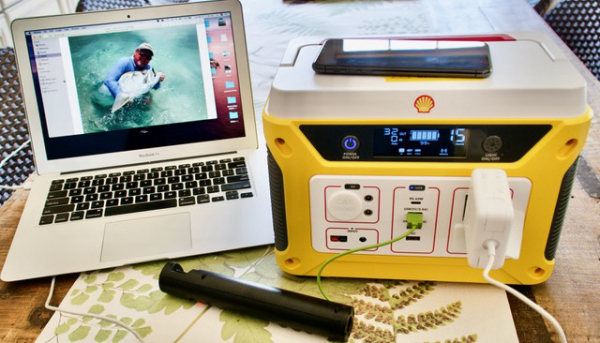
Since this is the smallest and least expensive of the Sky Intelligent units ($499.99 MSRP) I’m thinking it’s a pretty cost-effective solution to intentional off-grid travel or unexpected power interruptions. It can be charged four ways: 100W solar panel in 5-8 hours (not included), AC outlet or USBC PD in 5-6 hours, or via a (supplied) car charger in 7-8 hours.
I charged the test unit overnight, and haven’t recharged it yet, despite having charged my phone, my watch, my flashlight, three Sony camera batteries and a pair of Surefire 123A lithium batteries. It’s performed as-advertised.
According to the manufacturer, the unit is capable of recharging a mobile phone up to 48 times, a 500Wh laptop 8 times, a GoPro7 100 times, or a 1500W drone 10 times. In case you’re wondering, it also says it’s capable of running a 250W pellet grill for 1.8 hours, a 60W fridge for 10, a 75W TV for 6 hours, or a C-PAP/A-PAP for at least 11 hours.
This 14.7-pound powerhouse uses a “pure-sine” inverter. That means a steady 12 volts -until the battery totally fails.
Good news if you’re running mini fridges, freezers or C-PAP machines. Haven’t tried those -yet- but have no reason to doubt the claim. Everything else has been exactly as spec’d.
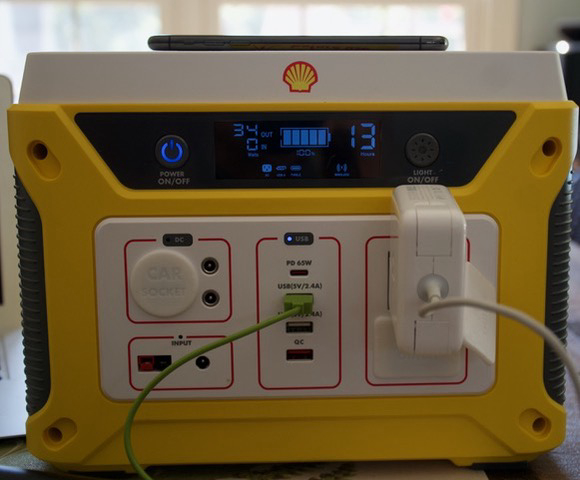
If you’re interested in getting one of these, here’s a tip that will save you some cash. Amazon currently has them listed at $399.99 -direct from Sky Intelligent. And before you start telling me that my test unit is from Shell, not sky intelligent, they’re a Shell licensee.
And..there’s also a set of LEDs on the backside of the unit. Useful for general lighting or set to flash in a traffic warning mode- not a bad idea in case of a nighttime breakdown.
Obviously, but I’m one of those people who believes fervently that backup power and light are essentials.
Several years ago, I found myself in deep woods (among other things) with a dead headlamp and no flashlight or extra batteries. Since that cold, wet night in the woods, I’m an advocate for the power of two - as in two lights, two spare batteries, and maybe a spare light (or two) “just in case.”
That’s why I’ve been a ready test pilot for a lot of lights over the years. Recently, the PR folks for Infinity X1 asked if I’d be interested in writing about their new “Hybrid, Dual-Core Power HIGHLAND Flashlight.”
When I informed them we didn’t write about any product we hadn’t actually used, they offered one of their units for testing. Being a flashlight enthusiast- I accepted.
(A Sidebar regarding product testing: you may believe we’ve never tested a product we didn’t “like.” You would be mistaken. We’ve used -and rejected- lots more “things” than are reviewed. If we don’t like it, we’re not going to waste your time writing about it. We return the product - with notes on why we’re not reviewing it. We believe manufacturers deserve our criticism in private. Companies have made changes based on our observations. We believe that method results in better products - for all of us.)
When the flashlight arrived, I was surprised to see the 5000 was a max lumen rating for the unit. It’s their max-power HIGHLAND model. Two others are available in 2500 or 1500 lumen levels.
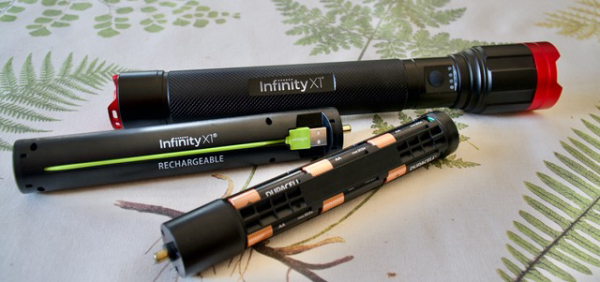
There are three power settings: full, medium and low for each model. Each ships with a rechargeable “core” and an accompanying battery-powered core that uses either nine or six AA alkaline batteries to power the unit.
The Hybrid, Dual Core thing refers to the rechargeable power core. You can either use it to run the flashlight or use it (outside the flashlight) to recharge other devices using a USB cable (not supplied). The charging cable, FYI, is integral to the rechargeable core - can’t lose it. Another plus.
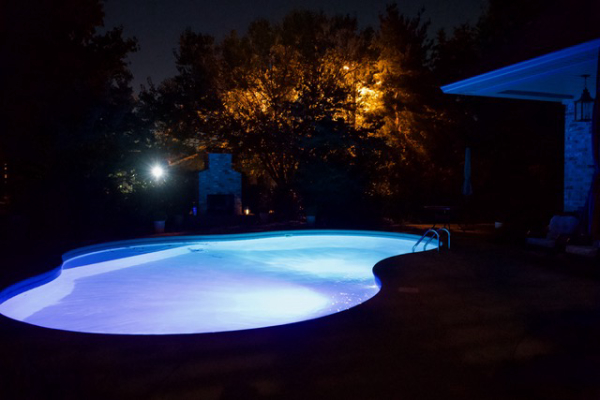
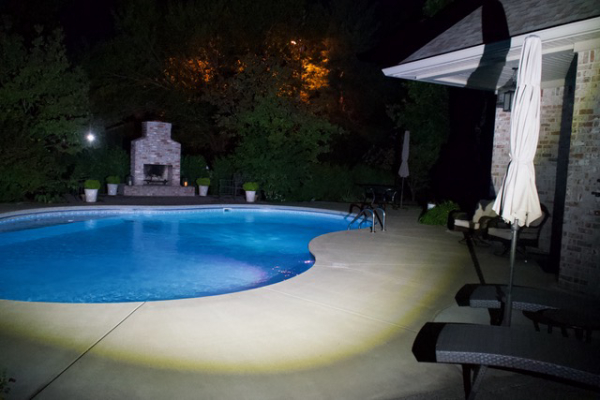
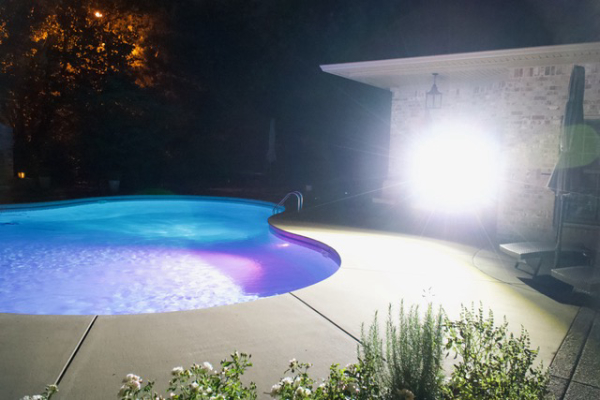
They’re made from aircraft-grade aluminum and the test unit has already survived a couple of nasty drops. They’re also rated IPX4 for water resistance. Note that IPX4 means “protected from splashing water from any direction” it does not imply waterproof. Only gear rated IPX7 or IPX8 are rated for up to three feet of water. IPX4, FYI, is sufficient to protect gear in normal conditions.
Here’s where you get a pleasant surprise: price. The most expensive of these lights (the 5000 model) has an MSRP of $89. The 2500 and 1500 lumen units are $69 and $59, respectively. And the company website is offering 15% off on a first order.
Two new products that work. If they didn’t, you wouldn’t see them here.
As always, we’ll keep you posted.
— Jim Shepherd